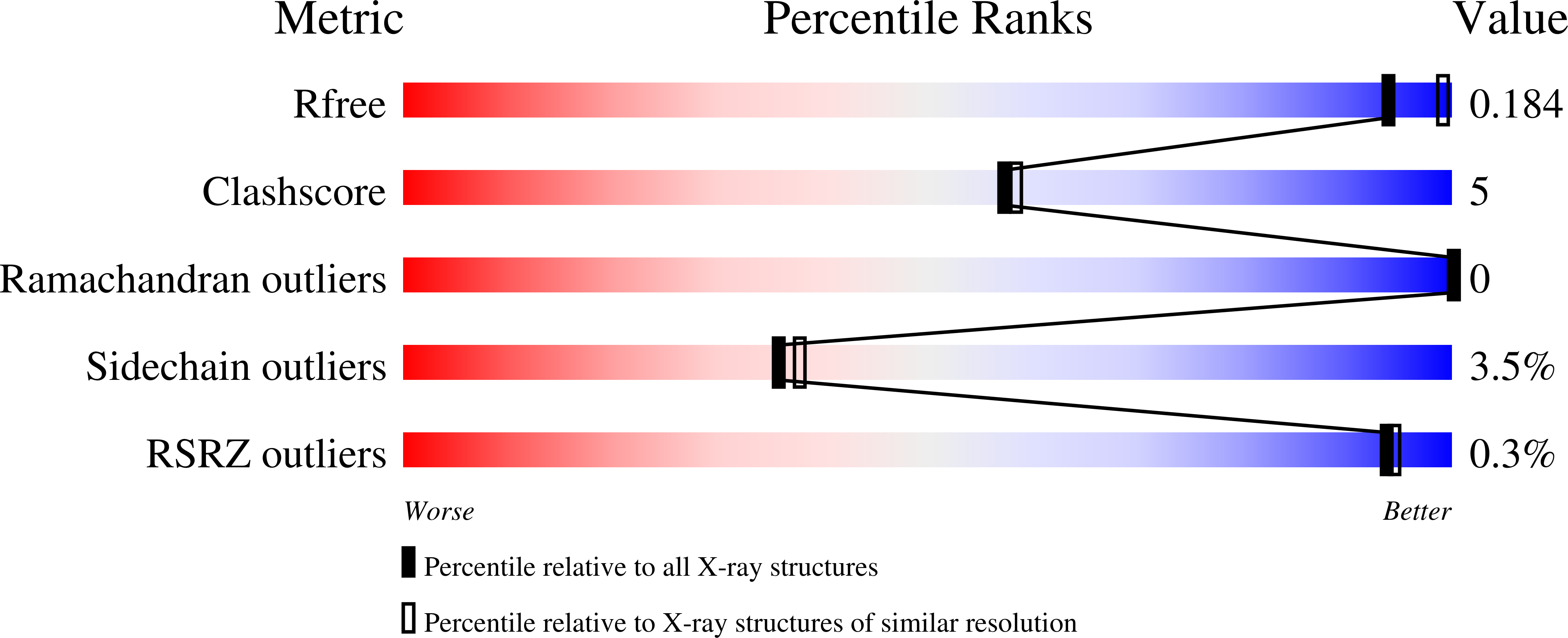Crystal structure of the GlnZ-DraG complex reveals a different form of PII-target interaction
Rajendran, C., Gerhardt, E.C.M., Bjelic, S., Gasperina, A., Scarduelli, M., Pedrosa, F.O., Chubatsu, L.S., Merrick, M., Souza, E.M., Winkler, F.K., Huergo, L.F., Li, X.-D.(2011) Proc Natl Acad Sci U S A 108: 18972-18976
- PubMed: 22074780
- DOI: https://doi.org/10.1073/pnas.1108038108
- Primary Citation of Related Structures:
3O5T - PubMed Abstract:
Nitrogen metabolism in bacteria and archaea is regulated by a ubiquitous class of proteins belonging to the P(II)family. P(II) proteins act as sensors of cellular nitrogen, carbon, and energy levels, and they control the activities of a wide range of target proteins by protein-protein interaction. The sensing mechanism relies on conformational changes induced by the binding of small molecules to P(II) and also by P(II) posttranslational modifications. In the diazotrophic bacterium Azospirillum brasilense, high levels of extracellular ammonium inactivate the nitrogenase regulatory enzyme DraG by relocalizing it from the cytoplasm to the cell membrane. Membrane localization of DraG occurs through the formation of a ternary complex in which the P(II) protein GlnZ interacts simultaneously with DraG and the ammonia channel AmtB. Here we describe the crystal structure of the GlnZ-DraG complex at 2.1 Å resolution, and confirm the physiological relevance of the structural data by site-directed mutagenesis. In contrast to other known P(II) complexes, the majority of contacts with the target protein do not involve the T-loop region of P(II). Hence this structure identifies a different mode of P(II) interaction with a target protein and demonstrates the potential for P(II) proteins to interact simultaneously with two different targets. A structural model of the AmtB-GlnZ-DraG ternary complex is presented. The results explain how the intracellular levels of ATP, ADP, and 2-oxoglutarate regulate the interaction between these three proteins and how DraG discriminates GlnZ from its close paralogue GlnB.
Organizational Affiliation:
Macromolecular Crystallography, Swiss Light Source, Paul Scherrer Institut, 5232 Villigen PSI, Switzerland.

















